2024 Лучшие бесплатные Deepnude AI: AI обнаженные
Ниже представлен список лучших AI-приложений для создания ню, которые стоит проверить!

When it comes to the generative AI tools that exploded onto the scene over the last few months, you've probably heard that the outputs are only ever as good as your prompts.
Whether you're designing your life on ChatGPT or creating era-defining art on platforms like Midjourney, everything hinges on your initial text input.
So, how do you craft prompts that ultimately generate the best art images possible?
This is what we're exploring today with our comprehensive guide that covers everything you need to know. Let's get into it.

Right off the bat, it's essential to understand that while text and image prompts are similar, they are not the same. Most art generators, like Midjourney, will use far more code and variants than text-based prompts.
Treat them as two separate entities.
So, how can we break down an art image prompt? It may look like this.
● Core Subject: The Image Content, Accompanied by its Actions, Conditions, and Ambiance
A picture of a bonsai tree in a greenhouse during sunset.
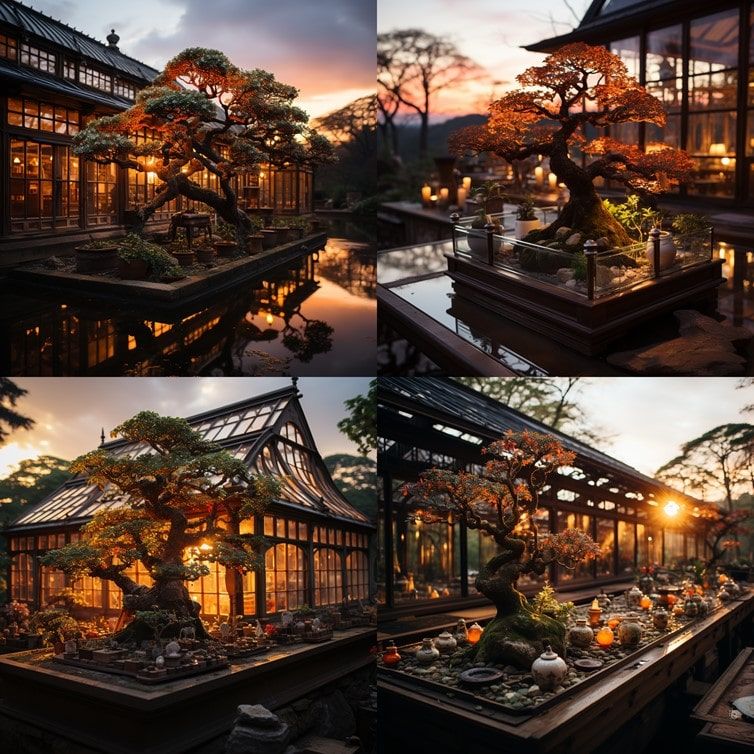
● Creative Frame: Referenced Art Forms, Stylistic Touches, and Inspirational Artists
A bonsai tree in a greenhouse during sunset in the style of Dali blended with pop art.
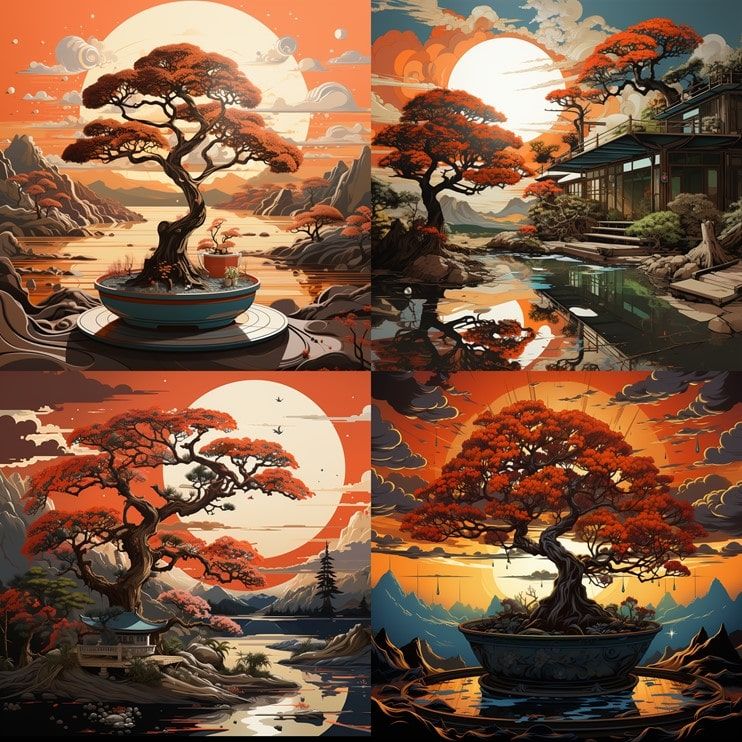
● Ambient Impressions: Further Details, from Lighting and Colors to Composition
A bonsai tree in a greenhouse during sunset in the style of Dali blended with pop art, a 100mm lens Sony camera with a bright light shining through the window
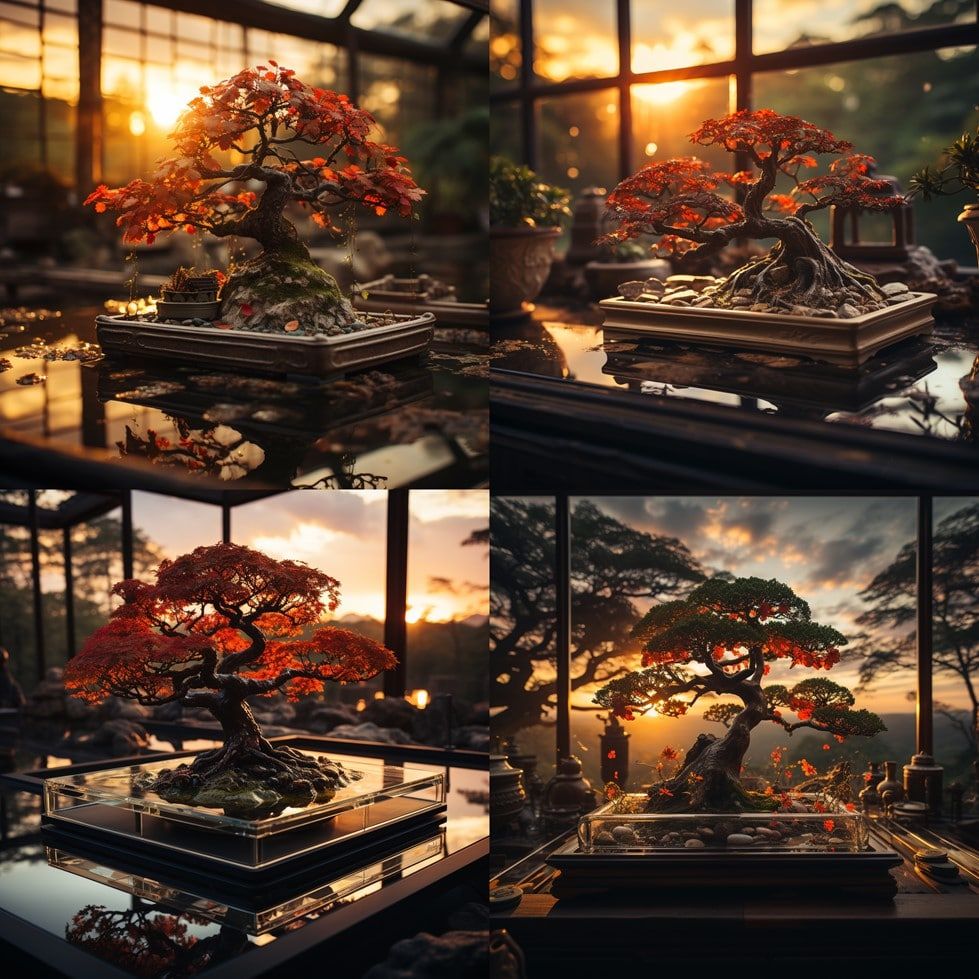
However, most art prompts are not written in sentence form, like the above, but instead broken up into short statements using commons. This not only aids the AI in interpreting the prompt but also provides clarity for the individual creating the prompt.
For example:

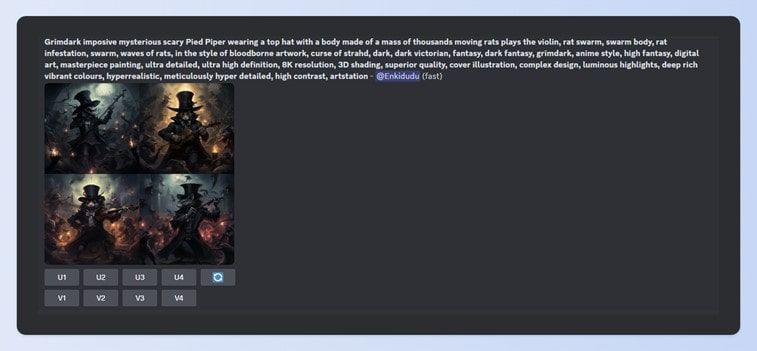
The perfect length of an AI art prompt is not set in stone.
There is no such thing since there's no wrong or right way to craft a prompt. It's simply an input that tells an AI model what to produce.
However, the more information you feed an AI model, the more confusing it can get, especially when the model decides what to prioritize, and that may not be what you want. Therefore, being as simple and concise as possible is your best bet for success.
On that note, Midjourney typically cooperates best with 60-word prompts, whereas Stable Diffusion performs optimally within a boundary of 380 characters.
That said, experimentation with longer, even extreme, prompts may lead to unforeseen delightful results.
Detailed and concrete language births more predicted outcomes, while poetic or abstract language can produce unexpected, yet possibly beautiful, results.
Keep things nice and simple, and you'll get simple results.
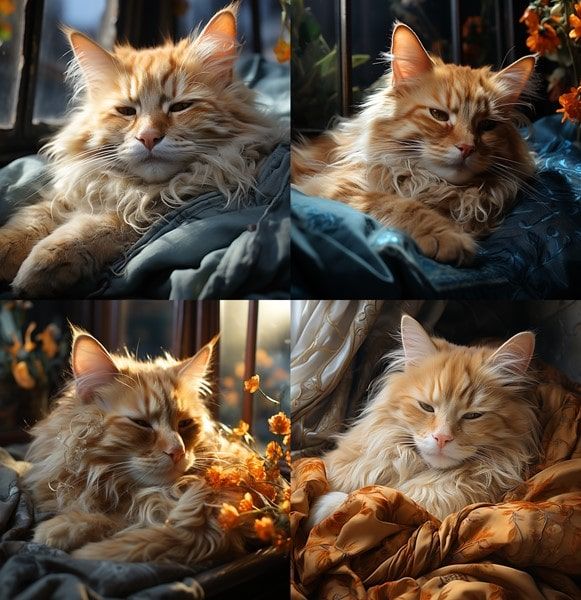
Go crazy and profound, and that's what you'll get back.
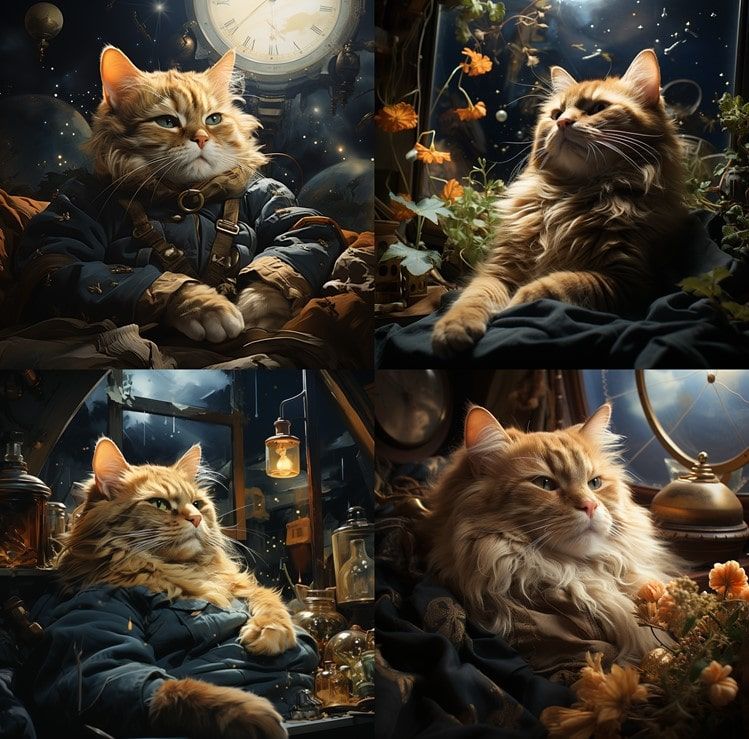
Therefore, it's important to be selective with the type of language you choose to use. It may even help to use a generative text model, like ChatGPT, to remix a simple prompt into something more spiritual and out there for more varied results.
The art of AI image generation starts with defining the content.
This could be as straightforward as "A cat lounging on a couch," generated by the AI program Midjourney.
This is the best place to start, but to refine your image outputs; you'll need to add in more detail, as we defined above.
Perhaps you're envisioning an urban skyline awash in the hues of the setting sun? Or a tranquil forest greeting the first light of morning?
Breathe life into this content by delving into:
● Actions: What is the subject of the image doing? (For example, gazing off into the distance, frolicking about, sprinting.)
● The nuances of these actions: How are these activities unfolding? (Perhaps gracefully, timidly, or vigorously?)
● Atmosphere: The mood or emotion pervading the image. (Such as a foreboding drizzly morning, treacherous sunset-kissed mountain range, memory-laden coffee nook)
Increase the precision of your descriptions for detailed outputs. The performance may differ across models since each will process the inputs uniquely based on their programming and development.
Once you've nailed the content, you'll want to provide orientation for the aesthetic.
Is the image going to mimic a watercolor masterpiece, the marble fluidity of a sculpture, or the mellow tones of a lo-fi snapshot? The introduction of a specific art form can decisively shift the result.
Let's take a stroll through some common artistic arenas you might want to explore in your prompts:
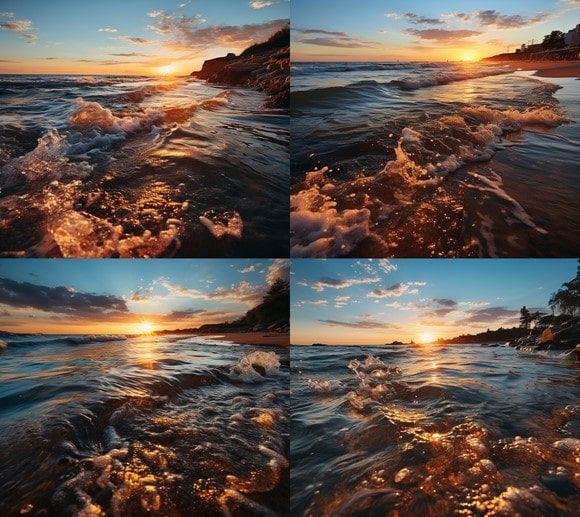
"A sun-soaked beach, brimming with joyous laughter of a child erecting a humble sandcastle, replicates the fast shutter action of a Nikon D6 with warm yellow lighting." Created through Midjourney.
Photography will probably feature in most of your prompts, especially if you aim for realism. Assert control over aspects like composition, ambient lighting, or even the specific 'gear' you're 'using,' down to camera and lens models.

A well-executed prompt could be: "An endearing robot, portrayed in an Impressionist oil painting style." Some other ideas include:
● Techniques: Oil painting, watercolor, etc.
● Artistic Movements: Impressionism, Fauvism, and beyond.
● Influential Artists: Cézanne Kahlo, to mention a few.
Furthermore, layering techniques, movements, and artist inspirations can yield an extraordinary outcome. And if your final images are for public consumption, it's good practice to acknowledge the artists who fueled your inspiration.
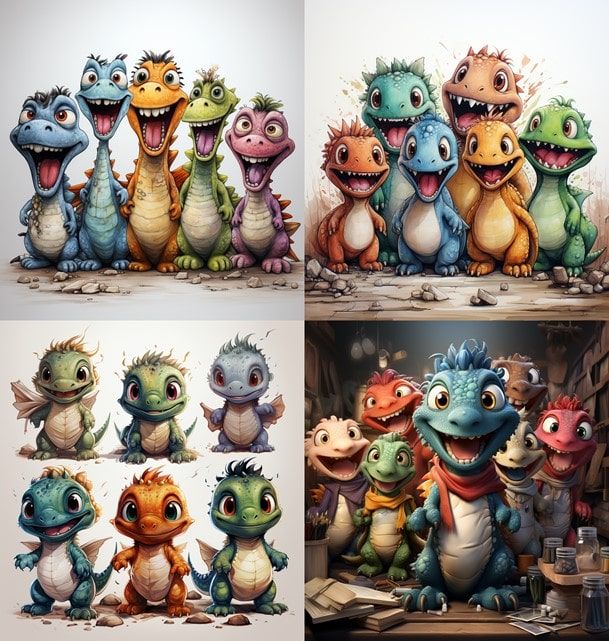
"Illustration straight out of a child's sketchbook: adorable, comforting dinosaurs."
Broaden your exploration with styles of illustration like:
● Pencil sketching.
● Charcoal rendering.
● Animated cartoon.
● Poster art.
● Digital Art
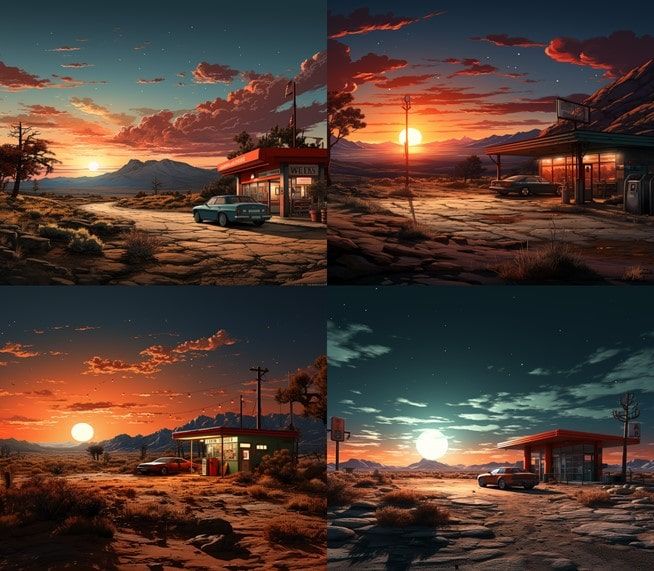
Four versions of a Midjourney generation with the prompt “"An isolated convenience store stands in the heart of the desert, bathed by the sunset glow, with a parked car accompanying it”
"An isolated convenience store stands in the heart of the desert, bathed by the sunset glow, with a parked car accompanying it — rendered with a lo-fi, nostalgic touch."

Finally, there's more to art than meets the eye — textures, materials, surfaces — all these aspects come into play. Dabble with other forms like:
● Sculpture.
● Collage.
● Street art.
● Textiles.
● Installations.
● Ceramics.
● Lithography.
The possibilities are endless. So blend, experiment, and await the magic of AI to respond.
If you're someone who revels in micromanaging every aspect of a project, you'll be glad to know that after deciding on the subject matter and art form, there are a myriad of other variables you can tune to influence the AI-generated output.
Framing pertains to the method of positioning the subject within the imagery, which can significantly affect the composition of the final picture.
However, controlling the framing can be challenging, depending on the initial input sequence.
For instance, if close-up shots prove to be tricky, try detailing the subject first before working on the background description.
Take this initial attempt: "An astronaut floating gracefully in space, with Earth visible in the distance, portrayed with a sense of awe and wonder." The AI image didn't quite capture the feeling of awe and smallness against the vastness of space.
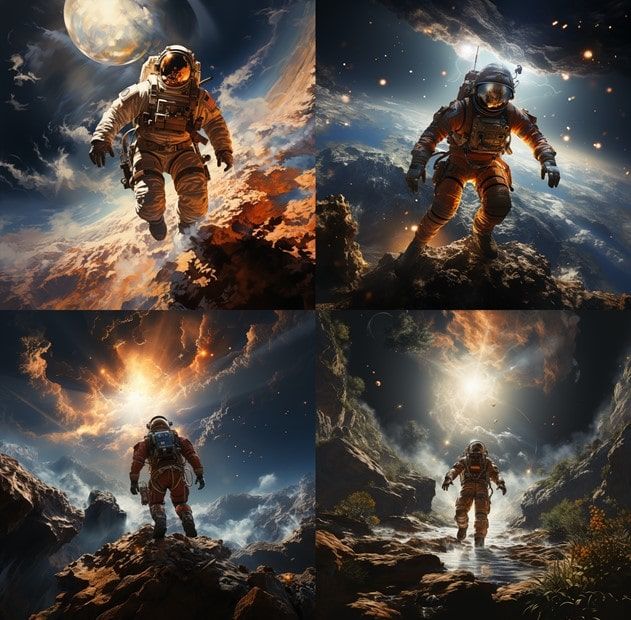
A rearrangement provided: "A look of awe on an astronaut's face as she floats weightlessly above Earth, the planet's immensity inducing a profound sense of wonder." Focusing on the astronaut's expression and perspective achieved a more evocative result.
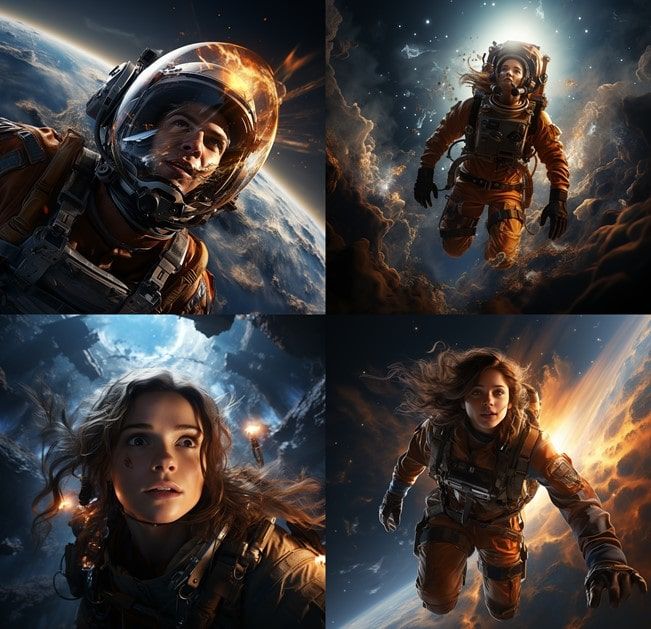
Or consider: "A musician sitting pensively under a tree, lost in composing a new song, depicted in a serene nature setting." The AI rendered the man but not the sense of creative focus.
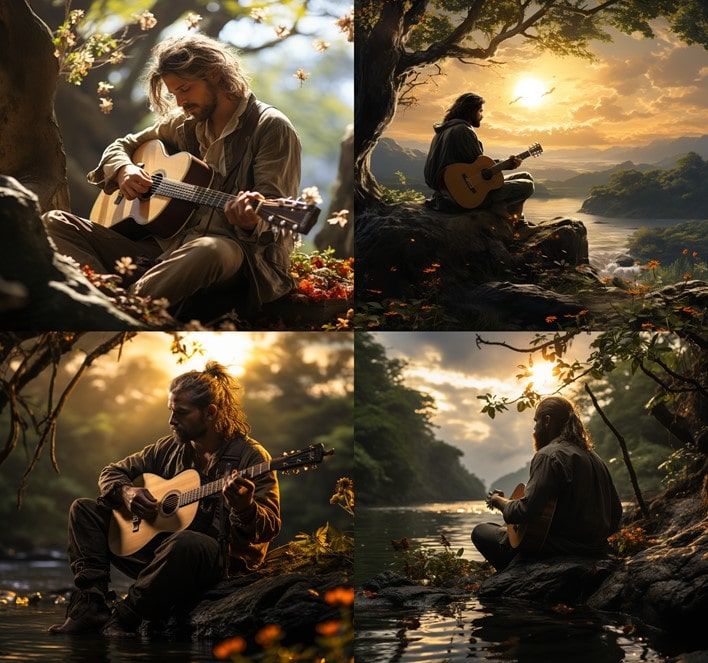
But specifying: "Close-up portrait of a bearded man under a tree, eyes closed in deep concentration as he composes music in his mind, radiating creative energy." brings out the right emotive elements.
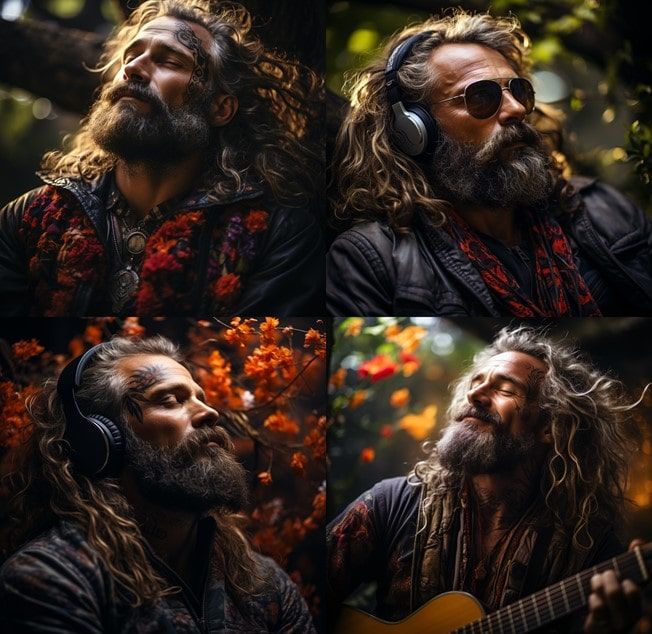
Careful phrasing and positioning of subjects, actions, and contexts can help prompt more meaningful and singular AI-generated images.
On top of this, film and photographic terms such as "wide shot," "point-of-view," or "Dutch angle" are usable in this context.
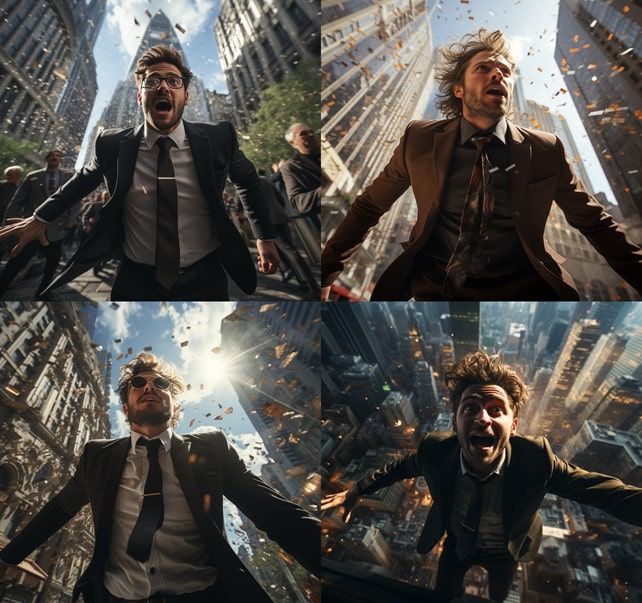
For those seeking total autonomy over image composition, AI outpainting presents a neat trick: it allows you to enlarge the boundaries of an image and then crop it to your liking.
Lighting, particularly in photography, assumes a high degree of importance as it can drastically morph the mood of an image.
Employ descriptors like "soft light," "hard light," or "dramatic lighting." Temporally anchored lights such as "dawn," "dusk," or "golden hour" also prove beneficial.
While control over lighting gives you a degree of command over the color in your image, separate prompts can be used to specify color schemes, thereby influencing the color of elements, lights, or the overall aesthetic of the image.
Using specifications like "4k" or "8k" in your prompts instructs the AI model to amp up the detail in the image. Note that this doesn't amplify the output image's actual resolution but rather the focus on quality. The best way to understand this is through experimentation.
"The Unreal Engine" prompt can reproduce the distinctive feel of images rendered using the mentioned gaming engine. And if your images do not appear lifelike enough, remember to include "realistic" or "ultra-realistic" in your prompt.
Need more exciting ideas for your new AI art prompt? Thought you've seen everything and don't know where to go for inspiration? Fear not! Here are several resources that will spark your creativity and provide you with fascinating prompts to explore:
Although your attempt to scrape the library did not yield results, it is still an excellent resource for art prompt ideas.
This library is a treasure trove of numerous AI-generated images, complete with their corresponding prompts. Simply scroll down the page and click on the images to see the prompts used to create them.
A website formulated for Stable Diffusion prompts, Lexica offers a diverse selection of AI-generated creative content. It aggregates prompts in various niches and styles, offering a comprehensive platform for users seeking intriguing and out-of-the-box prompts for their artwork.
Midjourney's Discord channels are bustling with enthusiastic users exploring the depths of AI art prompts. By joining these channels, you gain access to a community of creatives, observing their prompts, and getting feedback on your own. The environment is interactive and conducive to brainstorming new and interesting ideas.
Harness the power of AI to generate creative AI art prompt ideas. For instance, use ChatGPT to propose a range of prompts based on your rough ideas or preferences. You can guide it by specifying a theme, style, or any custom criteria and let it do the rest.
These sources serve as springboards for new ideas, shaping your imagination and broadening the scope of prompts you can come up with. The key to success is keeping an open mind and not being afraid to experiment.
Hone your AI artistry by mastering the art of crafting compelling prompts, and use resources like AI text generators, artistic communities, and curated libraries for inspiration. Remember, every fine detail counts!
Stay updated, stay creative!